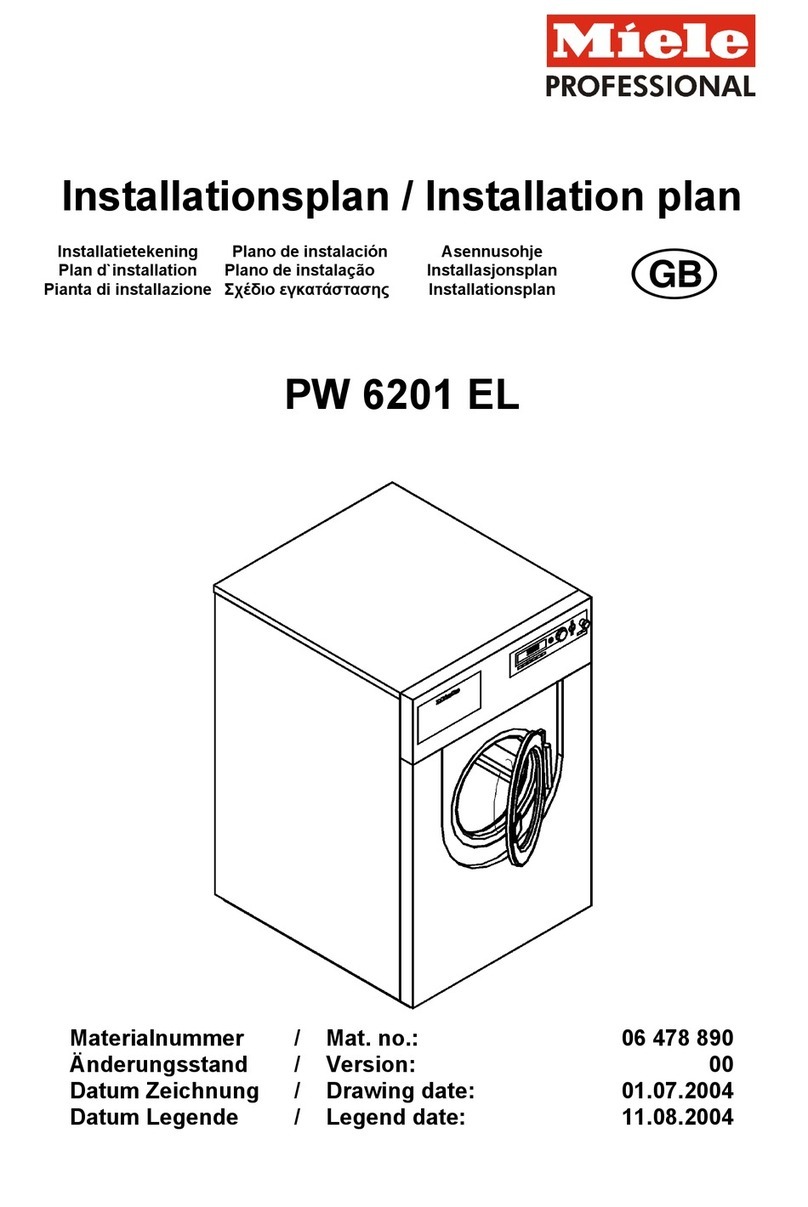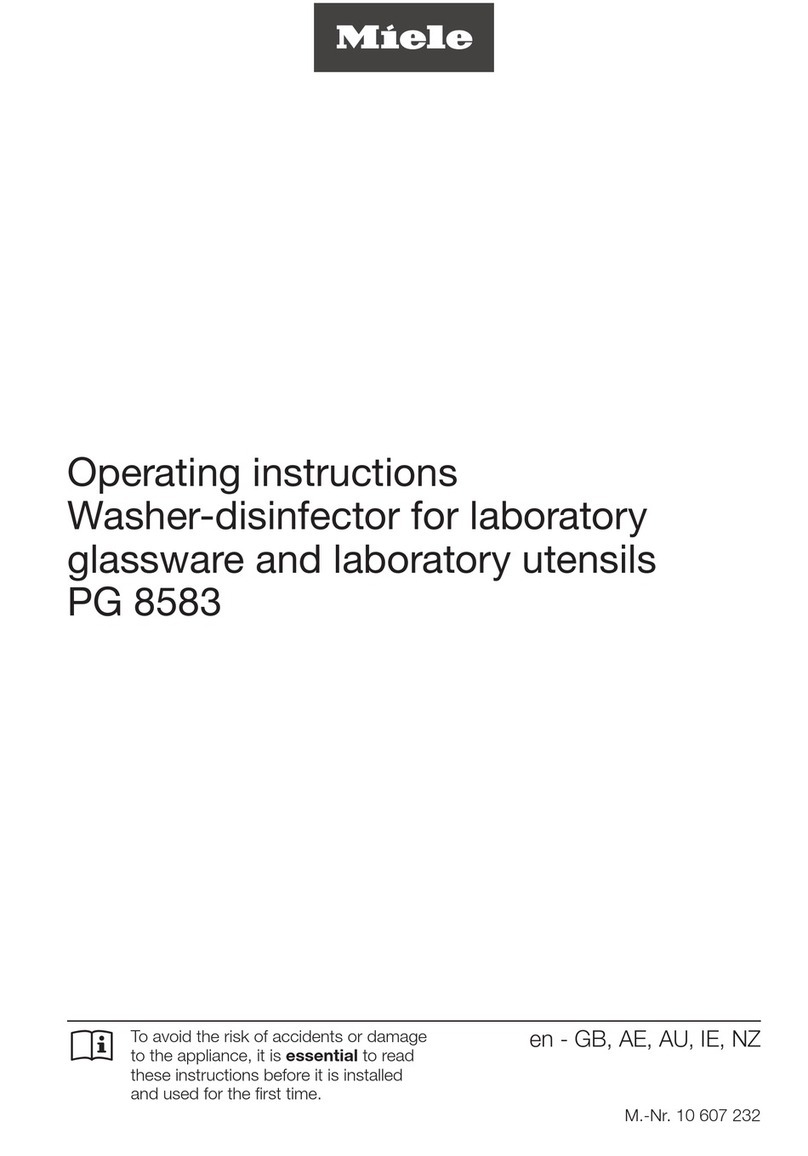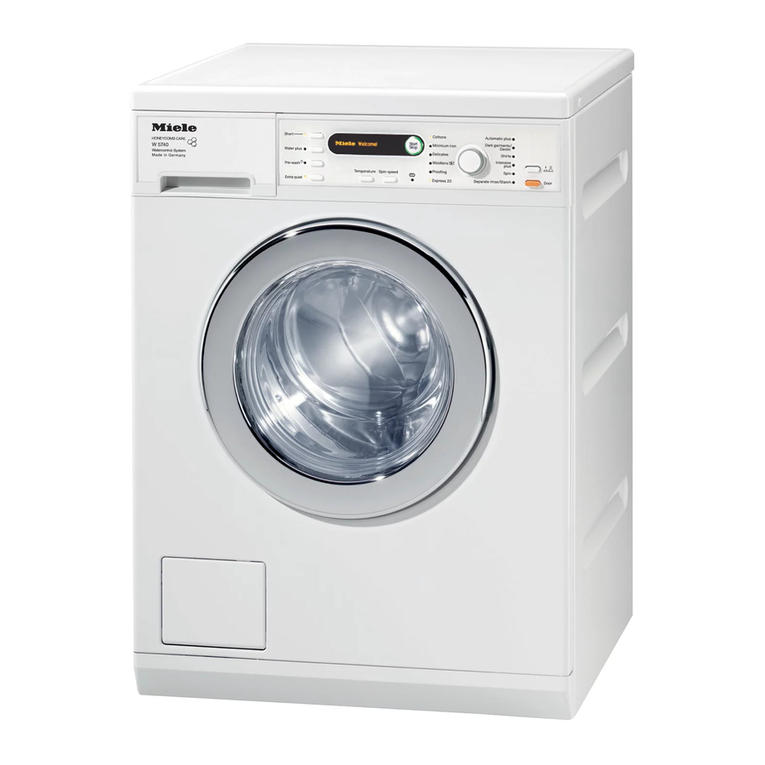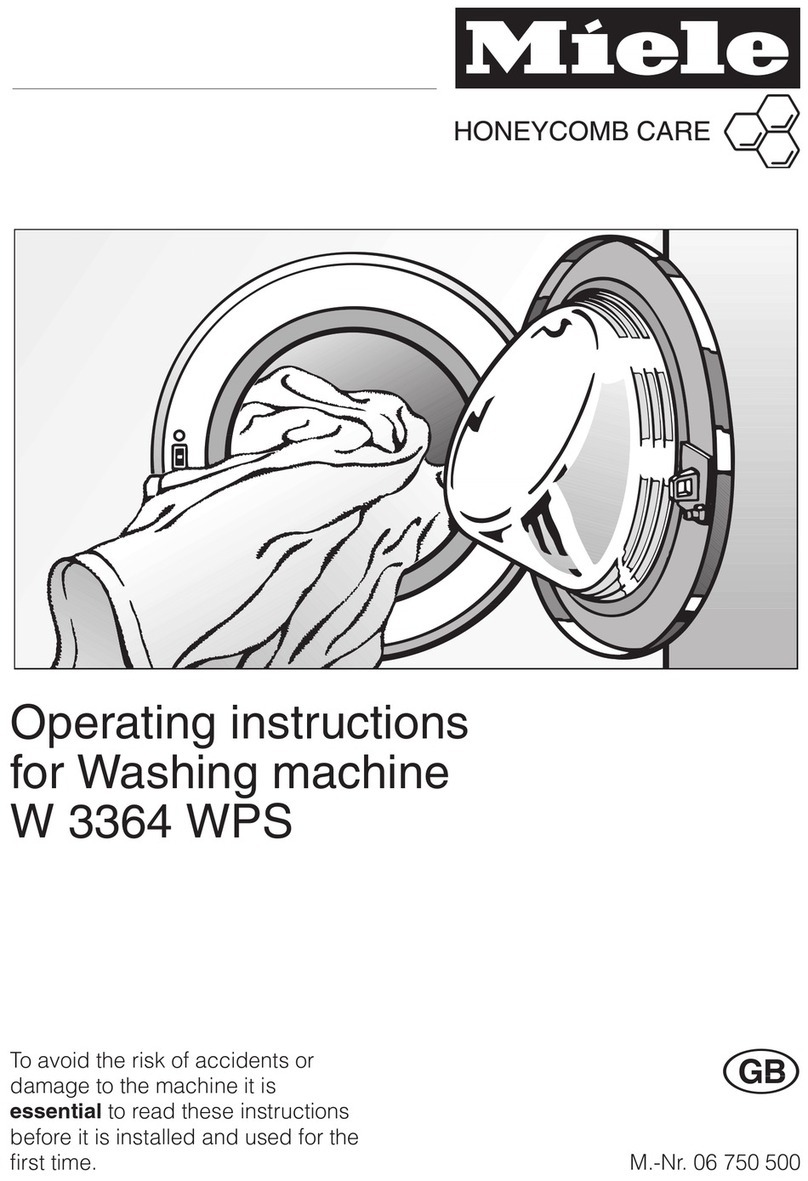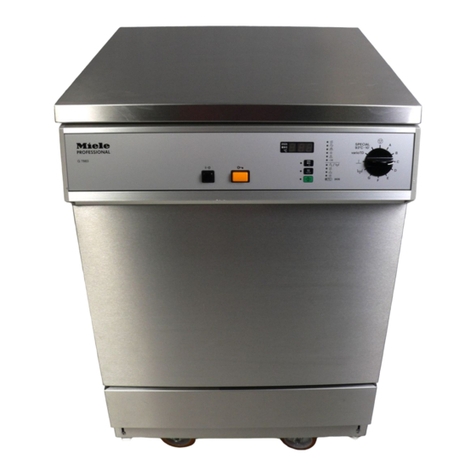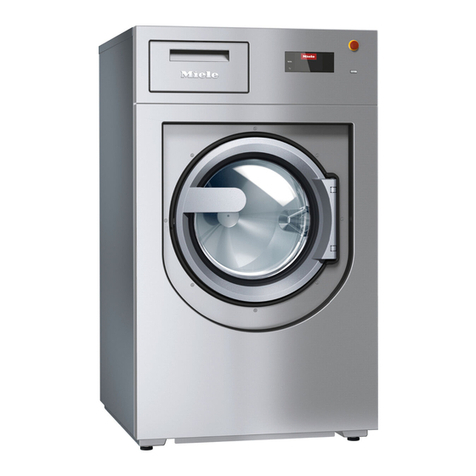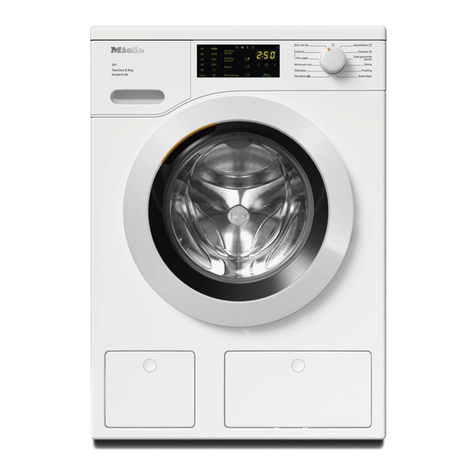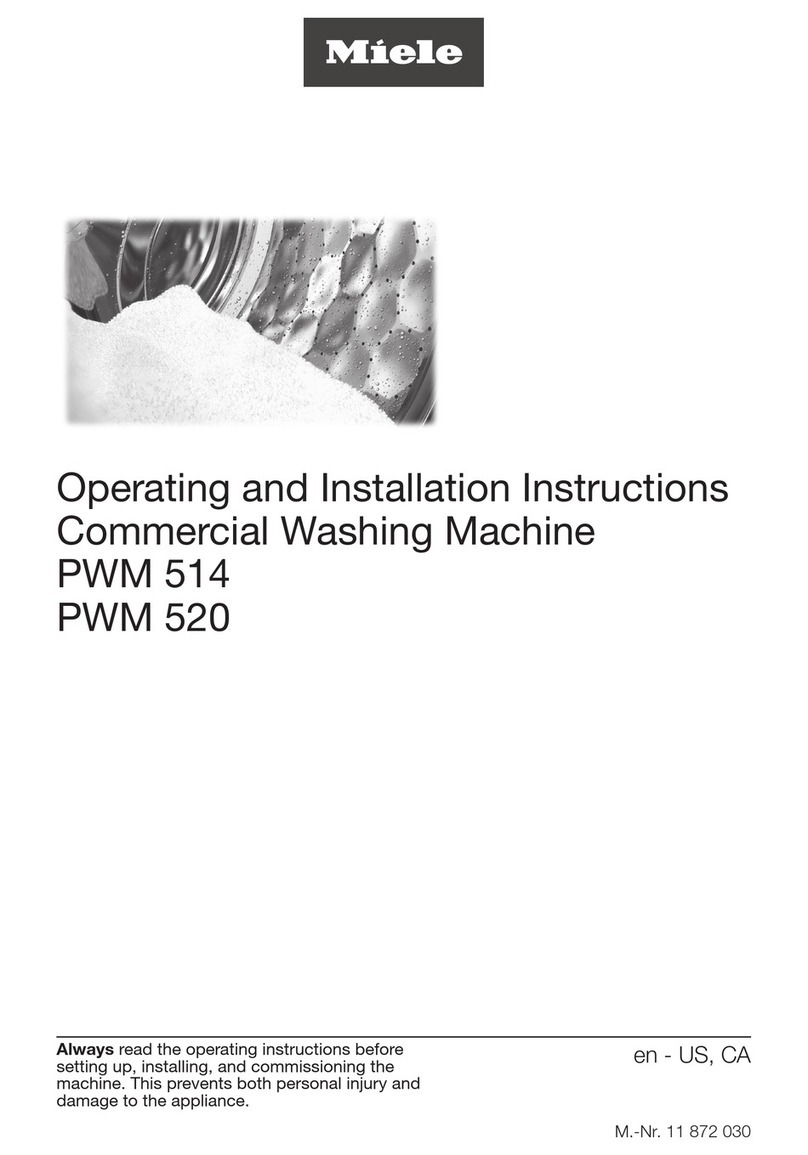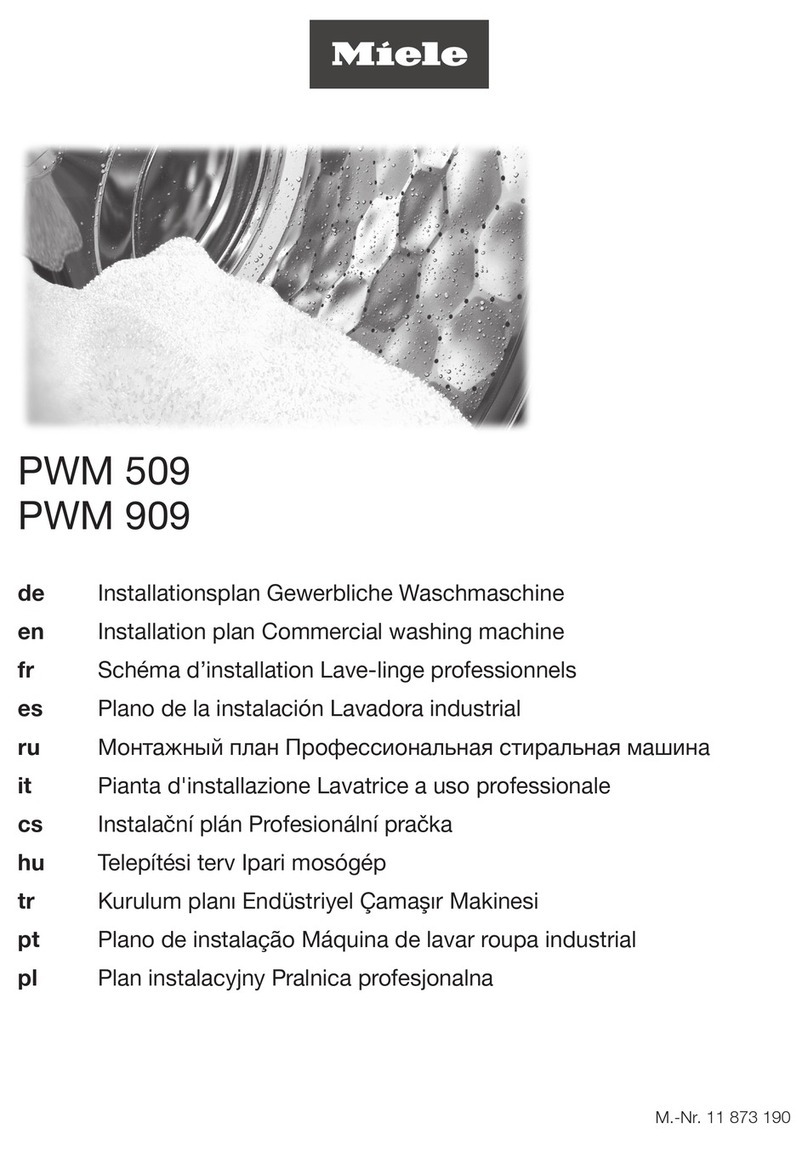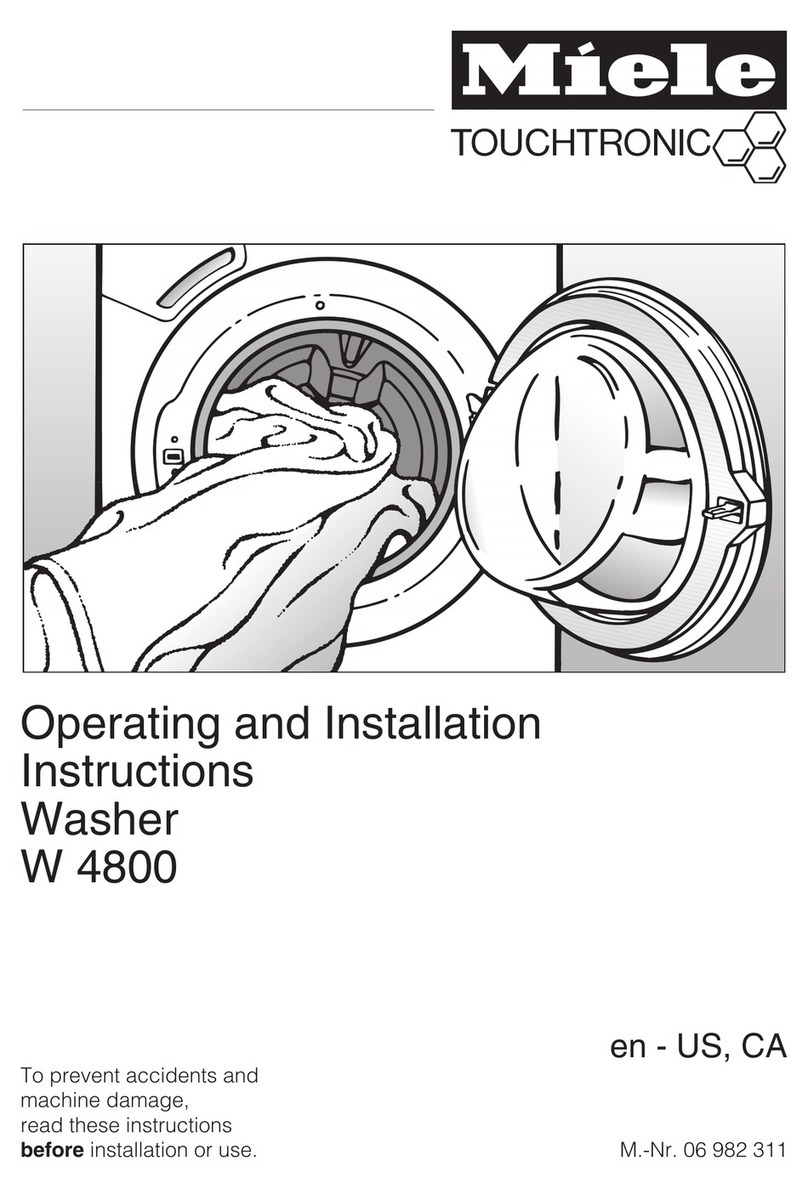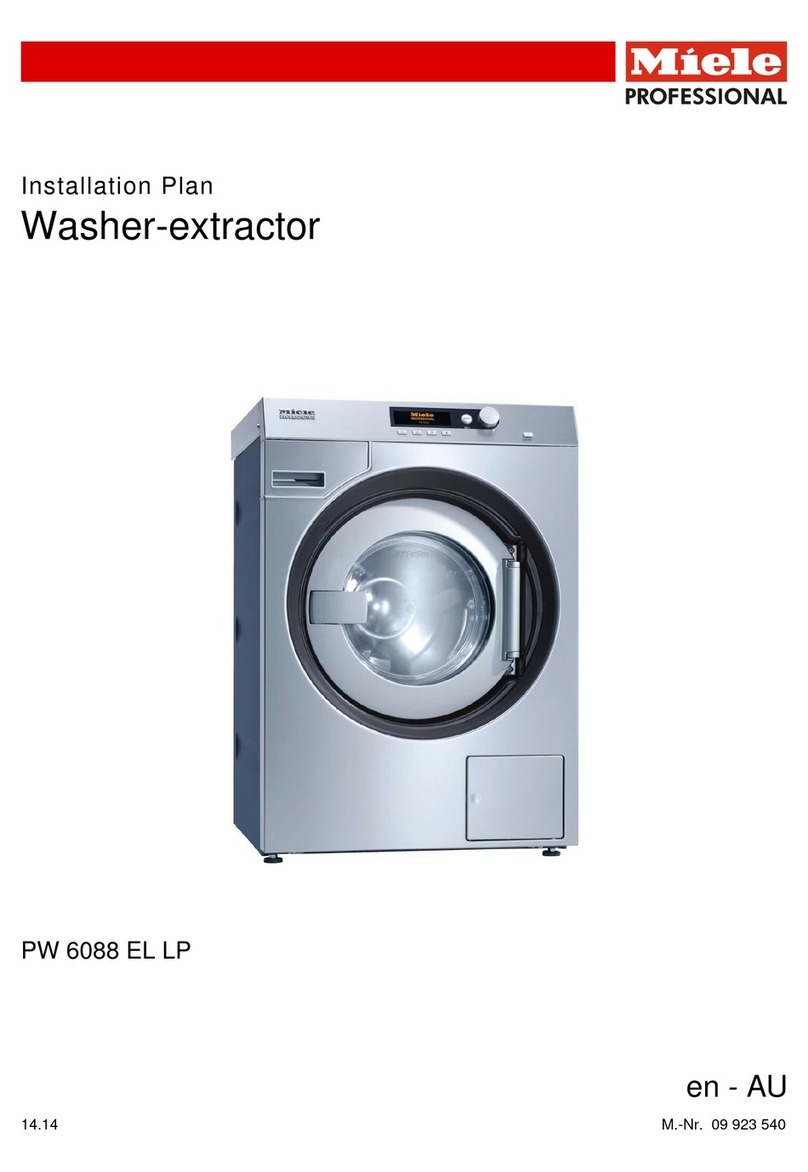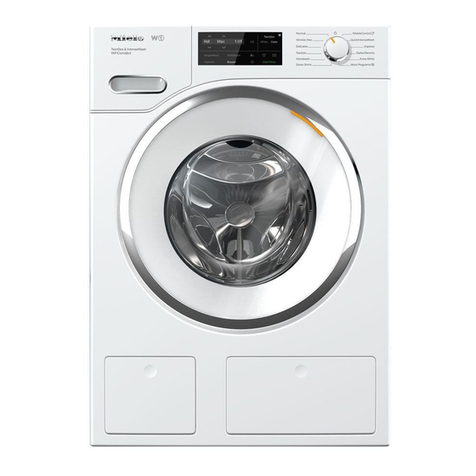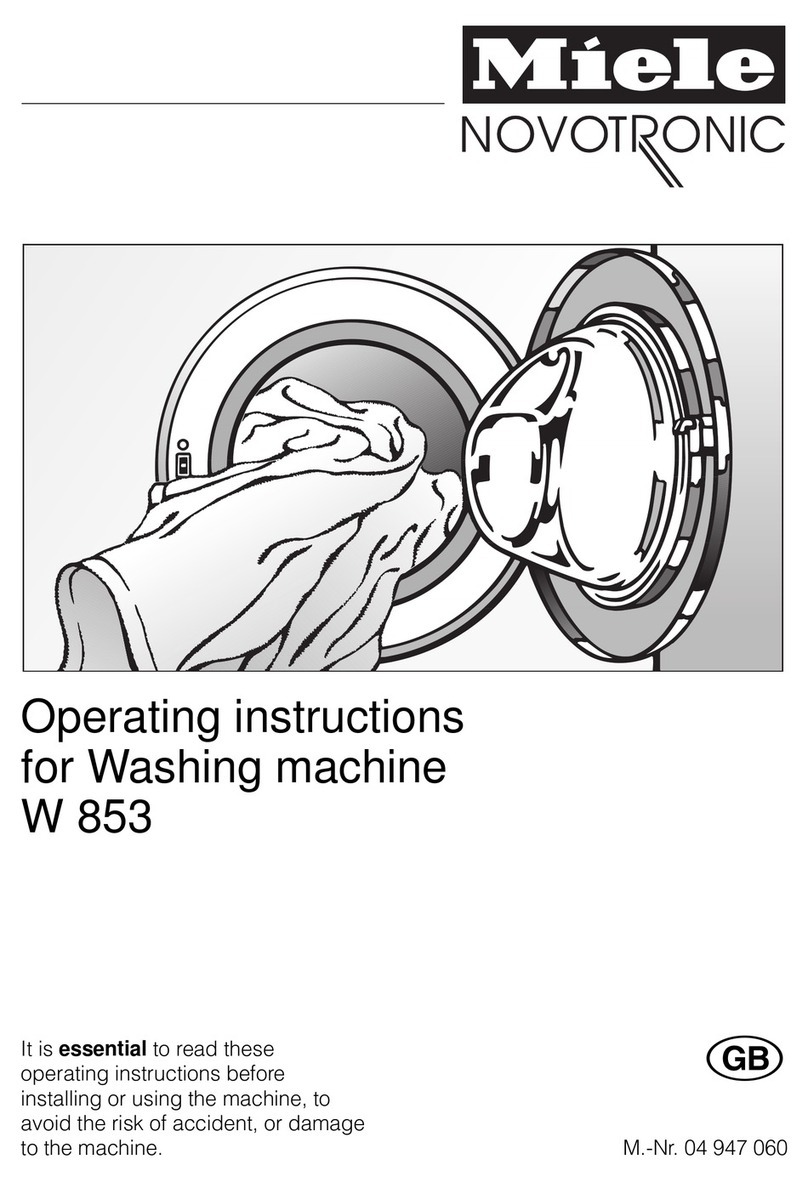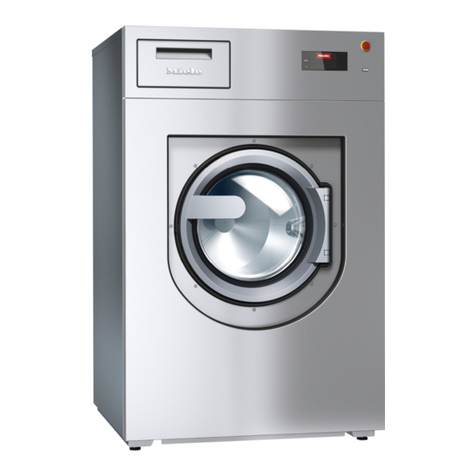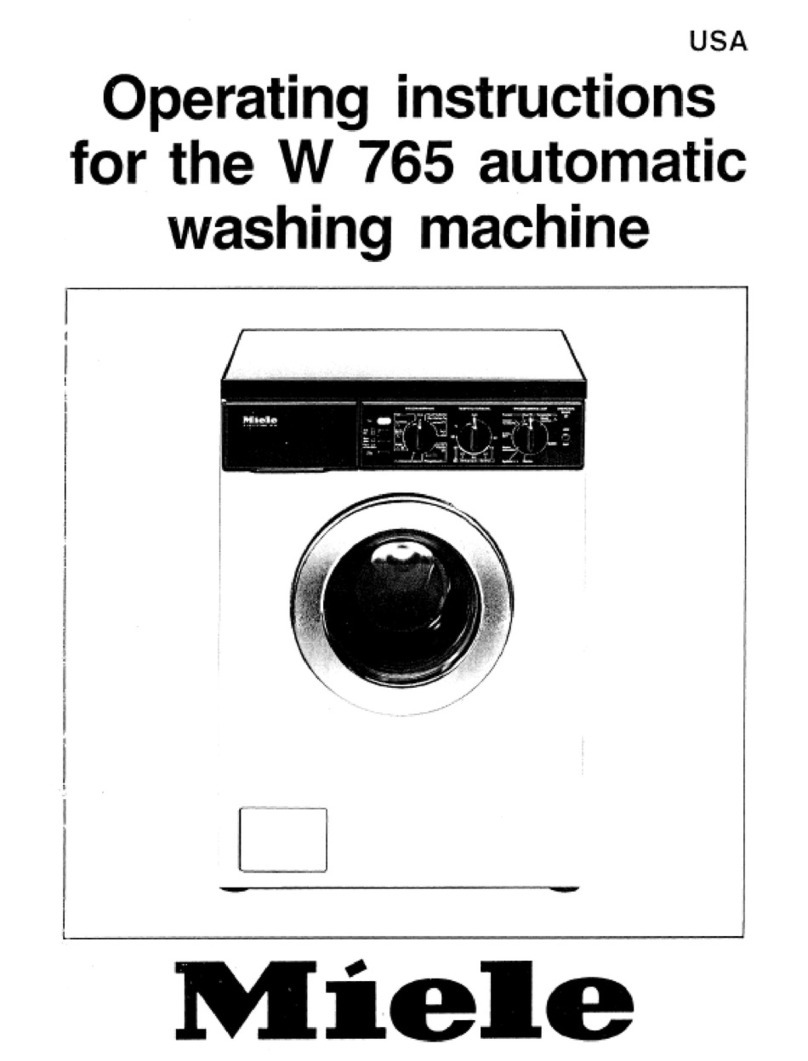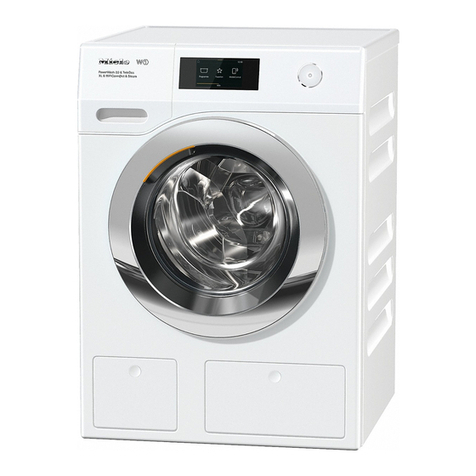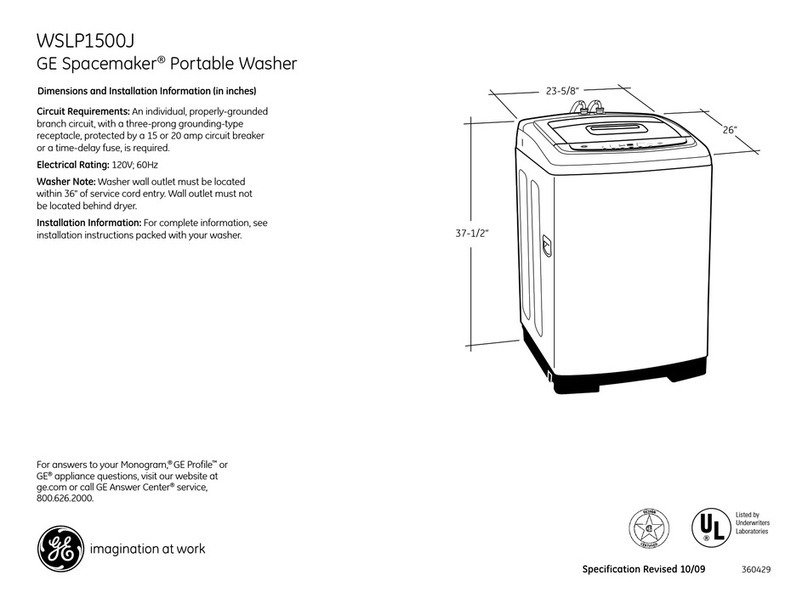
Contents
3
Cleaning and care ............................................................................................... 35
Cleaning the detergent drawer.............................................................................. 35
Cleaning the casing and fascia panel ................................................................... 36
Cleaning the drum, suds container and drainage system..................................... 36
Cleaning the water inlet filters ............................................................................... 37
Problem solving guide ........................................................................................ 38
The wash programme does not start .................................................................... 38
Programme cancellation and error message......................................................... 39
symbol on the time display ............................................................................. 40
Fault indicator light at the end of a programme .................................................... 40
An unsatisfactory wash result ............................................................................... 41
General problems .................................................................................................. 42
The door will not open........................................................................................... 43
Opening the door in the event of a blocked drain outlet and/or power cut .......... 44
Miele Service ....................................................................................................... 46
Contact in case of malfunction ............................................................................. 46
Optional accessories............................................................................................. 46
Installation............................................................................................................ 47
Front view .............................................................................................................. 47
Rear view............................................................................................................... 48
Installation locations.............................................................................................. 49
Installation notes ................................................................................................... 49
Transporting the washing machine to its installation site...................................... 50
Installation surface ................................................................................................ 51
Removing the transit bars ..................................................................................... 51
Refitting the transit bars ........................................................................................ 53
Levelling the washing machine ............................................................................. 53
Securing the washing machine to the plinth .................................................... 54
Installing under a continuous worktop ............................................................. 54
Water connection .................................................................................................. 55
Cold water connection .................................................................................... 55
Drainage ................................................................................................................ 56
Drain pump....................................................................................................... 56
Electrical connection ............................................................................................. 57
Technical data...................................................................................................... 59
Data sheet household washing machines............................................................. 60
Consumption data............................................................................................... 62
